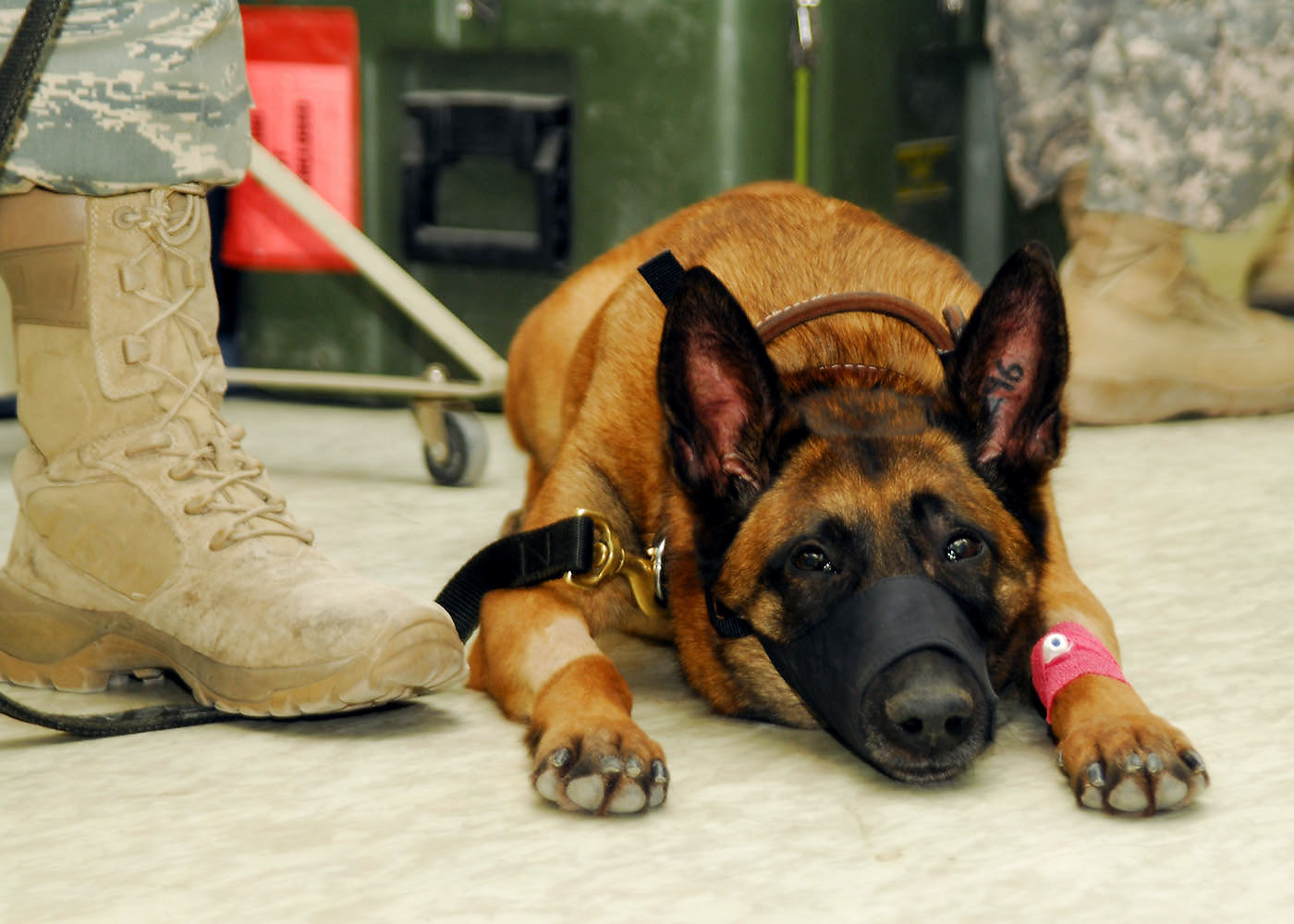$19 Billion Later, Pentagon’s Best Bomb-Detector Is a Dog.

Drones, metal detectors, chemical sniffers, and super spycams — forget ’em. The leader of the Pentagon’s multibillion military task force to stop improvised bombs says there’s nothing in the U.S. arsenal for bomb detection more powerful than a dog’s nose.
Despite a slew of bomb-finding gagdets, the American military only locates about 50 percent of the improvised explosives planted in Afghanistan and Iraq. But that number jumps to 80 percent when U.S. and Afghan patrols take dogs along for a sniff-heavy walk. “Dogs are the best detectors,” Lieutenant General Michael Oates, the commander of the Joint Improvised Explosive Device Defeat Organization, told a conference yesterday, National Defense reports. That’s not the greatest admission for a well-funded organization — nearly $19 billion since 2004, according to a congressional committee — tasked with solving one of the military’s wickedest problems.
Improvised explosive devices continue to rise in Afghanistan. There were 1,062 successful bomb attacks in the first eight months of 2010 there, compared to 820 during the previous period in 2009. Making matters worse in Afghanistan is the fact that most homemade bombs there are powered by fertilizers and chemicals, rendering metal detectors useless.
Picking up the chemical signature of those bombs should be relatively straightforward — just a matter of picking up the stray molecules that float away from unstable explosive material. In practice, it hasn’t been so easy. In 1997, a young program manager at Darpa launched the “Dog’s Nose” progam, to develop a bomb-sniffer as good as a canine’s. Today, that program manager, Regina Dugan, runs the entire agency. And Darpa is still has a project on the books to “leverag[e] the components of the canine olfactory system to create a breakthrough detection system.”
Detection is a “significant challenge,” Oates tells National Defense.
So rather than continuing a potentially futile search for a silver bullet, JIEDDO is now recommending other, non-technological, ways to combat IEDs, such as improved training and deeper understanding of the local sociopolitical landscape where IED planters are created much faster than U.S. forces can find them.
And JIEDDO is still spending big money on gadgets to spy on and disrupt every part of the IED network. Drones in the skies over Afghanistan hunt teams of bomb-planting insurgents. Forensics teams match latent fingerprints on bombs with Afghan bad guys whose thumb-scans and eye-prints are stored in biometric databases. JIEDDO pays for radio jammers to stop the frequencies insurgents might use to detonate the bombs.
The Vehicle and Dismount Exploitation Radar is a $138 million aircraft-mounted sensor that tracks moving targets like scampering insurgents from the skies. JIEDDO has also outfitted over 500 vehicles with special sensors to spot bombs at night (cost: $51 million); sponsored a “Wolfhound” sensor for dismounted infantrymen to detect insurgents’ personal communication devices (cost: $15 million); and an “enhanced optics system” called Keyhole that helps marksmen hit their bombmaker targets (cost: undisclosed). At yesterday’s conference, Oates said aerial sensors, particularly those creating full-motion video of bomb-heavy areas, were “enormously useful” in the fight against IEDs.
Congress, however, isn’t pleased. In March, the House Armed Services Committee questioned how well JIEDDO spent the $18.77 billion it’s received since its 2004 inception. “It is still difficult to associate funds spent with positive effects,” the committee wrote in a memo critical of the organization’s “inability to clearly articulate what it has been able to accomplish.” Last month, the Senate Appropriations Committee, while supportive of JIEDDO overall, cut nearly $442 million out of the Pentagon’s requested budget for the organization next year, finding that “certain programs” it operates “fall outside [an] IED-specific focus.” That’s in line with years of Hill disillusionment about the organization over its bureaucracy and dependence on contractors.
The core problem: the bombs are still proliferating — and not just in Afghanistan and Iraq, but globally. According to statistics Darpa provided Danger Room last month, for the last six months, there have been an average of 273 monthly IED incidents around the world excluding Iraq and Afghanistan. It’s hard to believe anyone would have such a problem with JIEDDO’s budget if the threat from the cheap, easy-to-rig bombs were receding.
Photo: USAF
